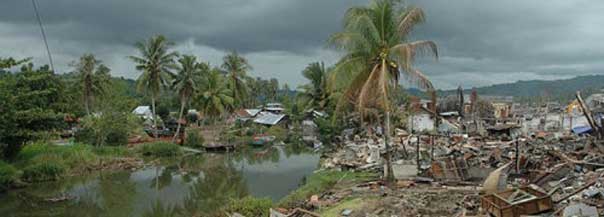Emergency Services

BHM provides emergency funding for additional medical supplies in the wake of natural and humanitarian disasters.
CYCLONE NARGIS
Nargis was a strong tropical cyclone that caused the worst natural disaster in the recorded history of Burma. The cyclone made landfall in Burma on Friday, May 2, 2008, causing catastrophic destruction and at least 138,000 fatalities. The Labutta Township alone was reported to have 80,000 dead, with about 10,000 more deaths in Bogale. There were around 55,000 people missing and many other deaths were found in other towns and areas, although it is most likely the military junta drastically under reported the death toll to minimize political fallout. The feared 'second wave' of fatalities from disease and lack of relief efforts never materialized according to the junta’s reports. According to reports, Indian authorities warned Burma about the danger that Cyclone Nargis posed 48 hours before it hit the country's coast but the junta did nothing to warn the people of Burma.
Relief efforts were slowed for political reasons as Burma's military rulers initially resisted large-scale international aid. Furthermore, some donated aid items were found to be available in the country's black market.
BPHWT responded immediately in the aftermath of Nargis. They formed 44 Emergency Action Teams-Burma (EAT-Burma) of 2-4 personnel who traveled into Burma. Many of the teams traveled to the Irrawaddy delta area. EAT-Burma teams had years of experience providing health and education services, training in human rights, health, education, women’s rights, leadership skills and responding to emergencies. This experience allowed them to provide humanitarian assistance in these areas without the support or approval of the military regime and at reduced risk in the cyclone affected communities.
The world saw some select photos of the tragic devastation that Nargis inflicted in the Irrawaddy delta area and around Rangoon. The junta’s restrictions on the media prevented the world from seeing the comparable damage that Nargis delivered into Karen State and other areas.
BHM’s support to the BPHWT was part of the support that enabled their EAT-Burma response to reach over 85 villages and 180,000 people suffering in the aftermath of Cyclone Nargis, in the Irrawaddy delta and eastern Burma.
In addition, BHM funded emergency and disaster response training for BPHWT staff. This training ensured that BPHWT are prepared for future disaster response.
BURMESE ARMY MILITARY VIOLENCE
Military attacks in eastern Burma followed the country-wide elections in early November 2010. As a means to solidify its support after the elections, the Regime insisted that all armed groups along the border formally join the Burma Army, a requirement that violated numerous ceasefire agreements. When a number of those groups refused, the Burma Army intensified military operations against the ethnic minorities in the eastern and northern part of Burma. In Karen State alone, an additional 25,000 people fled their homes.
BHM provided 100,000 doses of medicine and similar support, enabling BPHWT to provide care for these families displaced along both sides of the Thai-Burma border.


